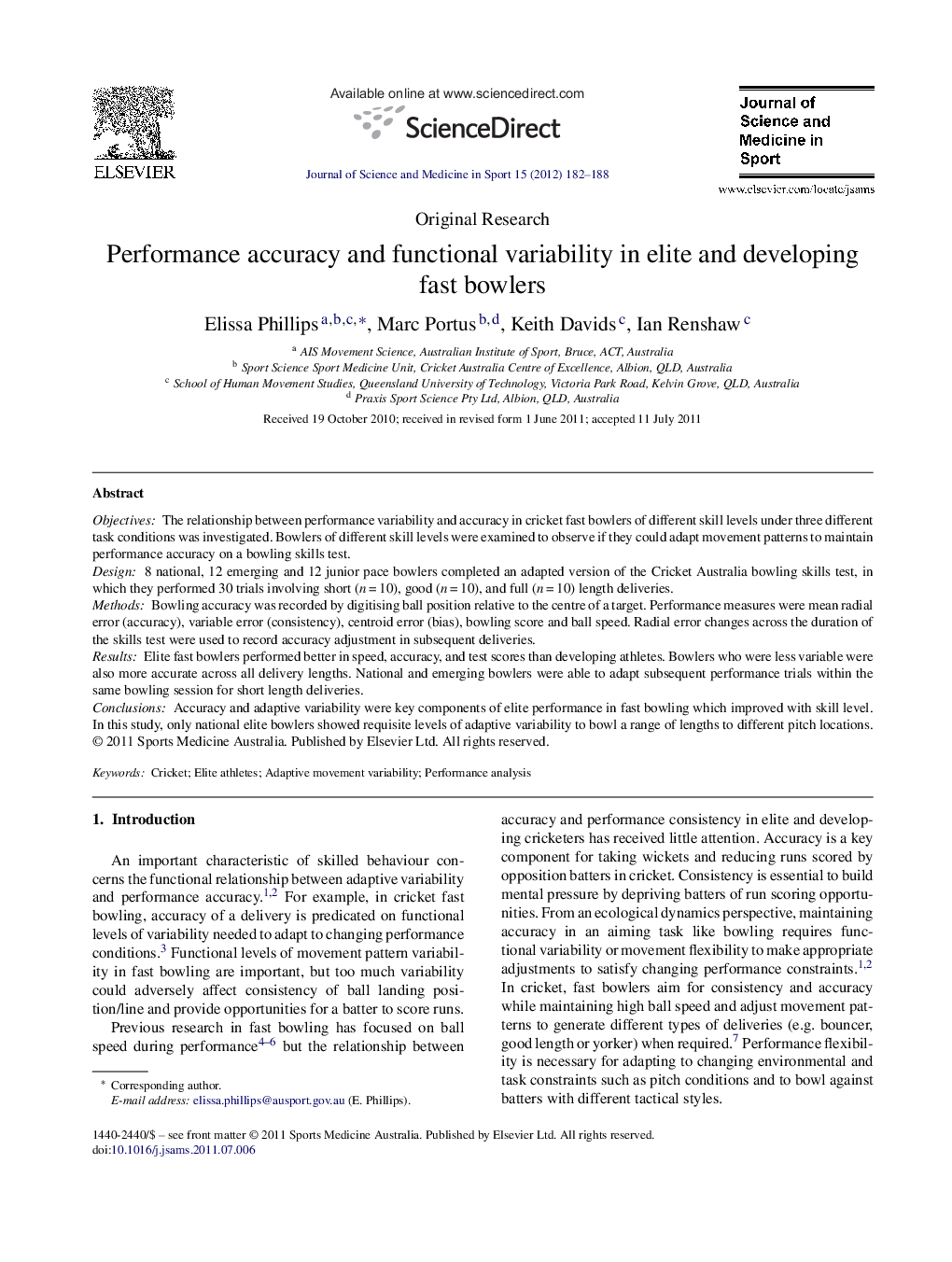| Article ID | Journal | Published Year | Pages | File Type |
|---|---|---|---|---|
| 2704670 | Journal of Science and Medicine in Sport | 2012 | 7 Pages |
ObjectivesThe relationship between performance variability and accuracy in cricket fast bowlers of different skill levels under three different task conditions was investigated. Bowlers of different skill levels were examined to observe if they could adapt movement patterns to maintain performance accuracy on a bowling skills test.Design8 national, 12 emerging and 12 junior pace bowlers completed an adapted version of the Cricket Australia bowling skills test, in which they performed 30 trials involving short (n = 10), good (n = 10), and full (n = 10) length deliveries.MethodsBowling accuracy was recorded by digitising ball position relative to the centre of a target. Performance measures were mean radial error (accuracy), variable error (consistency), centroid error (bias), bowling score and ball speed. Radial error changes across the duration of the skills test were used to record accuracy adjustment in subsequent deliveries.ResultsElite fast bowlers performed better in speed, accuracy, and test scores than developing athletes. Bowlers who were less variable were also more accurate across all delivery lengths. National and emerging bowlers were able to adapt subsequent performance trials within the same bowling session for short length deliveries.ConclusionsAccuracy and adaptive variability were key components of elite performance in fast bowling which improved with skill level. In this study, only national elite bowlers showed requisite levels of adaptive variability to bowl a range of lengths to different pitch locations.
